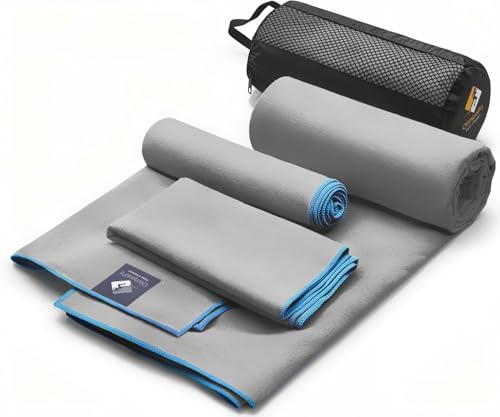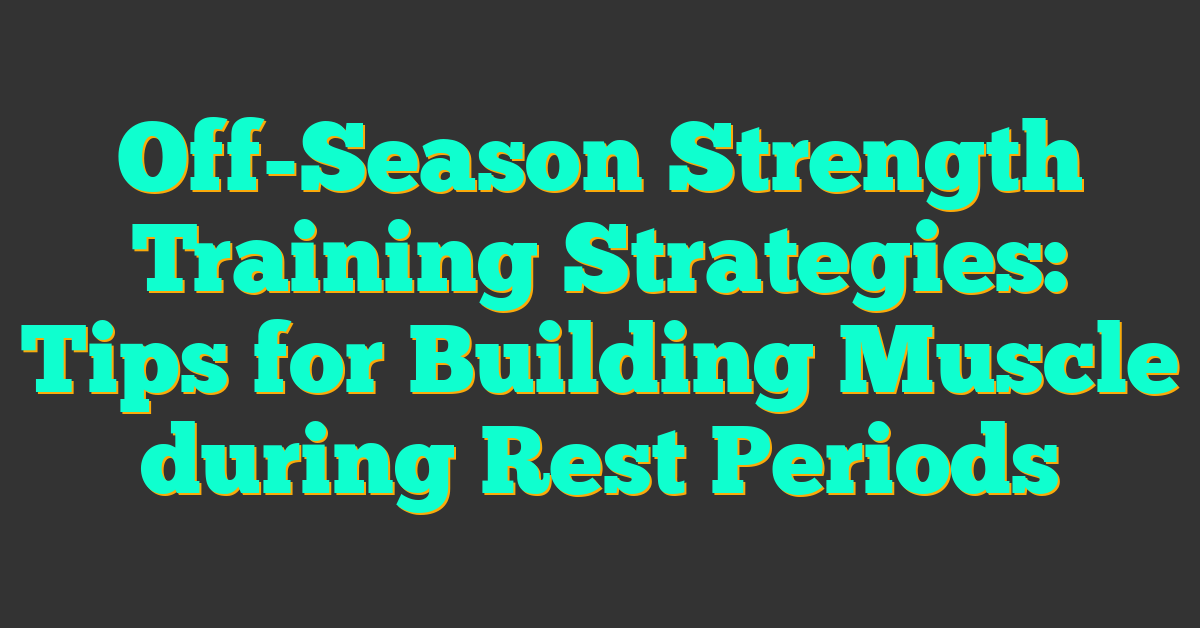I love turning a big race into a real getaway. A triathlon race vacation lets me chase a goal and soak up a new place all in one trip. I want it to feel smooth and fun not hurried or stressful. So I start with a clear plan that matches my fitness my schedule and my idea of a good time.

In this guide I’ll walk through how I balance training travel and play. I’ll show how I pick the right race how I map out simple logistics and how I leave room for rest and little adventures. Think smart timing easy gear decisions and recovery that still feels like vacation. With a few thoughtful choices I can cross the finish line strong and still come home with great memories.
What Makes A Great Triathlon Race Vacation
A great triathlon race vacation blends peak performance and relaxed travel across training, logistics, and recovery.
- Pick race-host synergy first. Favor courses that match my strengths on swim current bike elevation and run surface, for example flat bike loops in IM Florida or shaded run paths in Hamburg.
- Time arrivals precisely next. Land early enough to align body clocks and course previews. Aim 2 to 4 days for short hops and 1 day per time zone crossed for long hauls.
- Book frictionless logistics early. Anchor the hotel near transition or finish within 0.5 to 1 mile and confirm late checkout for post-race showers.
- Pack race-critical items methodically. Use a checklist for essentials like power pedals latex tubes aero helmet and travel tools, add backups for small parts like valve extenders and CO2 heads.
- Fuel race and vacation deliberately. Lock race-day carbs sodium and fluids first, add destination foods second after testing them in training.
- Acclimate to climate deliberately. Schedule heat sessions or cold swims that mirror host conditions and match wetsuit rules for that series.
- Pace plans around terrain. Build power or pace targets by segment for wind grades and surface, set caps for climbs and surges to protect the run.
- Recover with intent. Book recovery blocks like naps mobility and protein timing, add light sightseeing after the first meal and shower.
- Explore with structure. Slot 1 to 2 headline activities like a museum or boat tour on rest or post-race days, keep pre-race outings under 60 minutes on foot.
- Insure the trip comprehensively. Add race entry coverage bike damage and medical evacuation for international events.
- Communicate expectations early. Share the race window quiet hours and meal times with travel partners using a simple shared note.
| Topic | Recommendation | Source |
|---|---|---|
| Time zone adaptation | 1 day per time zone crossed | CDC Yellow Book |
| Pre-race arrival | 2–4 days domestic, 3–6 days intercontinental | CDC Yellow Book |
| Heat acclimation | 7–14 days of heat exposure | American College of Sports Medicine |
| Altitude acclimatization | 7–10 days above 1,500 m before racing | CDC High-Altitude Travel |
| Race hydration | 0.4–0.8 L per hour based on sweat rate | ACSM Position Stand |
| Carbohydrate intake during | 60–90 g per hour for events over 2.5 h | IOC Consensus Statement |
| Sodium during | 300–600 mg per hour individualized | ACSM Practical Guidelines |
| Wetsuit cutoff sprint–standard | Wetsuit banned above 22°C World Triathlon events | World Triathlon Competition Rules |
| Wetsuit cutoff Ironman | Wetsuit non-eligible age-group above 24.5°C | IRONMAN Competition Rules |
- Validate local rules precisely. Check the specific event guide for temperature cutoffs bag-drop times and bike check-ins, then align gear and timelines.
How To Plan A Triathlon Race Vacation: Step-By-Step
I map a triathlon race vacation with a clear sequence. I keep performance and enjoyment aligned from sign-up to sightseeing.
Choose The Right Race And Destination
- Match course demands to strengths, for example flat bike splits for steady riders and hilly runs for strong climbers.
- Check water type and temperature, for example ocean swells, freshwater chop, and wetsuit legality thresholds at 20°C to 24.6°C, based on race rules, Source: World Triathlon Competition Rules.
- Confirm climate norms by month, for example heat index, humidity, and wind, Source: NOAA Climate Normals.
- Verify altitude and terrain, for example sea level sprints for beginners and moderate altitude halves for experienced athletes.
- Validate drafting rules, cutoffs, and wave formats, Source: World Triathlon Competition Rules.
- Prioritize venue logistics, for example single transition area, walkable expo, and spectator access for family.
- Review visa, vaccination, and insurance requirements for the destination, Source: U.S. Department of State and CDC Travel Health.
Time Your Travel, Taper, And Acclimation
I anchor timing to physiology and logistics. I front load adaptation, then I sharpen.
Timeline and targets
| Window | Action | Data point | Source |
|---|---|---|---|
| 21–14 days out | Start taper | Cut volume 40–60 percent, keep intensity | Mujika and Padilla, IJSPP |
| 14–7 days out | Begin heat work if hot race | Acclimate in 7–14 days with daily sessions | ACSM Consensus |
| 7–4 days out | Arrive for long haul eastbound | Adapt about 1 time zone per day | AASM Jet Lag Guidance |
| 5–3 days out | Arrive for long haul westbound | Adapt about 0.5–1 time zone per day | AASM Jet Lag Guidance |
| 3–2 days out | Course recon and short efforts | Include bricks and open water entries | Coaching practice standards |
| 1 day out | Rest and prepare gear | Prioritize sleep and carbs 7–10 g per kg for full distance | IOC Consensus on Sports Nutrition |
- Plan early arrivals for heat, altitude, and big time shifts.
- Schedule shakeouts at race time to sync body clocks.
- Set sleep anchors, then use morning light for east and evening light for west, Source: AASM.
Build A Realistic Budget And Find Value
I price the triathlon race vacation with firm categories. I track fixed costs and variables with buffers.
| Category | Typical range USD | Notes |
|---|---|---|
| Race entry | 150–900 | Sprint to full distance, add processing fees |
| Flights | 300–1,500 | Seasonal routes, bike friendly carriers |
| Bike transport | 0–400 | Case rental, airline fee, or ship via courier |
| Lodging | 120–300 per night | Kitchen access, near venue, quiet area |
| Local transport | 15–80 per day | Rideshare, rail, rental car with bike fit |
| Food | 40–90 per day | Groceries for race fuel, restaurant meals |
| Insurance | 50–200 | Medical, trip, and bike coverage |
| Extras | 50–200 | Sightseeing, SIM, data, souvenirs |
- Separate race costs from vacation extras to protect performance.
- Book flexible rates for flights and rooms to manage disruptions, Source: U.S. DOT consumer rules.
- Compare airline bike fees, shipping quotes, and case rentals for total cost.
- Target walkable lodging to cut transit and stress.
Book Flights, Lodging, And Local Transport
- Choose airlines with clear bike policies, for example sports item as standard bag up to 23–32 kg, Source: IATA guidance, carrier rules.
- Pick flight times that land midday for check-in, gear build, and light spin.
- Select layovers of 90–150 minutes for safe bike transfers.
- Reserve aisle seats for legs and hydration access on long sectors.
- Book lodging 0.3–1.0 miles from start for easy morning flow.
- Secure a room with kitchen, fridge, and washer for fueling and kit care.
- Request a quiet floor and late checkout for recovery.
- Arrange transport that fits a bike case, for example hatchback rentals, wagon taxis, and rail cars with bike areas, Source: local operator policies.
- Confirm expo hours, transition access, and bag drop times against the race guide, Source: race athlete guide and World Triathlon protocols.
Destinations And Races Worth Considering
I match race profiles to my fitness and travel goals, then I anchor my triathlon race vacation around reliable climate and course data. I favor destinations with efficient logistics, spectator access, and memorable post-race recovery options.
Beachfront And Island Courses
Beachfront and island courses pair warm water with coastal winds and fast roads. I use heat, humidity, and current data to set pacing and fueling.
- Target calmer bays for swim confidence, examples include Noosa, San Juan, and Honolulu.
- Prioritize shade access and cold fluids in humid zones, examples include Puerto Rico, Phuket, and Cairns.
- Schedule early arrivals for heat acclimation, examples include Hawaii, Queensland, and Phuket.
- Book beach-adjacent lodging to simplify gear moves, examples include Waikoloa, Condado, and Noosa Heads.
Mountain And Altitude Challenges
Mountain and altitude challenges trade oxygen for scenery. I respect hypoxia and plan pacing with lower power targets.
- Select courses with predictable climbs, examples include Boulder, Alpe d’Huez, and St. George.
- Calibrate effort by altitude and gradient, examples include 1,600 m towns and 1,800 m passes.
- Extend warm-ups for ventilatory readiness, examples include longer spins and easy jogs.
- Add low-cadence climbs in training for torque, examples include 8-minute reps and 4-6% grades.
Iconic Urban Classics
Iconic urban classics showcase closed roads, deep fields, and efficient transit. I build itineraries around public transport and centralized expo hubs.
- Favor big-city logistics for partners, examples include subways, trams, and rideshare.
- Plan spectating loops for motivation, examples include lap-based bikes and multi-loop runs.
- Book walkable hotels near start and finish, examples include WTCS venues and city-stadium zones.
- Fit culture stops into recovery windows, examples include museums, parks, and waterfronts.
Snapshot Of Notable Races And Conditions
| Race | Location | Typical month | Air temp | Water temp | Altitude start | Bike elevation gain |
|---|---|---|---|---|---|---|
| IRONMAN 70.3 Hawai‘i (Honu) | Waikoloa, Hawai‘i | June | 86°F day | 77°F ocean | 30 m | 1,400 m |
| IRONMAN 70.3 Puerto Rico | San Juan, Puerto Rico | March | 84°F day | 79°F ocean | 3 m | 430 m |
| Noosa Triathlon | Noosa Heads, Australia | November | 79°F day | 73°F ocean | 10 m | 250 m |
| Laguna Phuket Triathlon | Phuket, Thailand | November | 88°F day | 84°F sea | 5 m | 1,100 m |
| IRONMAN 70.3 Boulder | Boulder, Colorado | August | 86°F day | 72°F reservoir | 1,655 m | 430 m |
| Alpe d’Huez Triathlon | Huez, France | July | 75°F day | 61°F lake | 1,860 m | 3,200 m |
| IRONMAN 70.3 St. George | St. George, Utah | May | 85°F day | 61°F reservoir | 820 m | 1,100 m |
| WTCS Yokohama | Yokohama, Japan | May | 73°F day | 68°F bay | 5 m | 150 m |
| Hamburg Wasser Tri | Hamburg, Germany | July | 73°F day | 68°F lake | 8 m | 120 m |
| NYC Triathlon | New York, USA | July | 85°F day | 72°F river | 10 m | 250 m |
- NOAA National Centers for Environmental Information, climate normals and SST, 1991–2020
- Australian Bureau of Meteorology, climate data for Noosa Heads and Queensland coast
- Météo-France, climate data for Huez and Isère
- CDC Yellow Book, High-Altitude Travel and Altitude Illness, physiologic effects from 1,500 m
- IRONMAN race pages, course maps and elevation profiles, event-specific athlete guides
- World Triathlon event pages, WTCS course details and logistics
Gear And Travel Logistics
I plan race-trip logistics to protect performance and keep the vacation easy. I anchor gear choices to the course, the airline, and the local support.
Traveling With Your Bike: Cases Vs. Shipping
I match the transport method to my itinerary and budget. I compare protection, cost, and hassle across hard cases, soft cases, and door-to-door shipping.
| Option | Typical weight lb | One way cost domestic USD | One way cost international USD | Protection level | Airport handling |
|---|---|---|---|---|---|
| Hard case | 25–35 | 75–200 airline bike fee | 150–300 airline bike fee | High | Self check in |
| Soft case | 17–25 | 0–150 sports luggage fee | 100–250 sports luggage fee | Medium | Self check in |
| Ship service | N A | 70–180 BikeFlights within 48 states | 250–600 cross border carrier | High with pro pack | No airport carry |
Sources: United, Delta, American published bike fees, BikeFlights rate estimator, 2025.
- Pick a hard case for max frame protection if rough handling seems likely.
- Pick a soft case for easier lifts if stairs and small cars are common.
- Pick shipping for zero airport drag if lodging can receive boxes.
- Protect the drivetrain with a rear derailleur removal if hanger fragility worries you.
- Protect the fork and stays with foam and dropout spacers if disc brake rotors sit exposed.
- Protect wheels in padded sleeves if deep sections like 60 mm travel with the frame.
I follow airline rules on batteries, gases, and tools. I pack spare Di2 or AXS batteries in carry on per IATA guidance on lithium ion spares. I leave CO2 at home per TSA rules that only allow cartridges in special life vests. I place torque wrenches and multi tools in checked bags per TSA prohibited tools in cabin. I drain and clean the bike before travel if soil checks apply at customs.
Sources: IATA Dangerous Goods Table lithium batteries, TSA 3 1 1 liquids rule and prohibited items, New Zealand MPI biosecurity bike guidance.
- Remove pedals and rear derailleur for compact pack if hanger alignment matters on race day.
- Remove rotors and pad spacers for disc brakes if rub risk rises after flights.
- Remove cockpit from steerer for small cars if rideshare trunks run short.
- Mark torque values on painters tape for fast rebuild if late arrivals happen.
- Photograph cable and spacer order before disassembly if internal routing feels complex.
Packing Nutrition And Race-Day Essentials
I lock nutrition and essentials to race demands and local availability. I bring enough for key sessions and race day if supply looks uncertain.
| Item | Race target | Quantity example | Rationale | Source |
|---|---|---|---|---|
| Carbs intake | 60–90 g per hour bike, 30–60 g per hour run | 3 gels at 30 g each per hour bike, 2 gels per hour run | Support endurance output | ACSM 2016 Position Stand |
| Sodium intake | 300–600 mg per hour | 1–2 electrolyte caps at 300 mg each per hour | Support fluid balance | ISSN 2018 Statement |
| Fluids intake | 400–800 ml per hour by heat and sweat rate | 1 small bottle at 500 ml per hour cool, 2 per hour hot | Match sweat loss | ACSM 2016 Position Stand |
| Caffeine dose | 3–6 mg per kg pre race | 200–300 mg for 70 kg athlete | Ergogenic aid | ISSN 2021 Position Stand |
- Pack a race box with counted servings if expo brands differ from training.
- Pack a mix of forms like gels, chews, drinks if gut comfort varies by intensity.
- Pack hypo kits like antihistamines, anti diarrhea tabs, blister care if remote venues lack pharmacies.
- Test a full race menu in long bricks if gut training still needs practice.
- Label bags by leg bike, run, specials if transitions include aid swaps.
I make airport screening fast with clear separation of liquids and powders. I place gels and drink mix in a one quart bag in carry on per TSA 3 1 1. I move bigger bottles and aerosol sunscreen to checked bags per TSA size limits. I carry prescriptions in original labels per CBP entry checks. I buy CO2 and sealant on site at a local shop if flight rules restrict pressurized items.
- Stage a rebuild kit with mini pump, tire levers, chain quick link if arrival rides start on day one.
- Stage spares like tubes, brake pads, cleats if destination shops run limited stock.
- Stage charging for head units, Di2, lights if outlet types differ from home.
- Stage adapters like Type C, Type G, Type I if the country uses non US plugs.
Sources: TSA 3 1 1 Liquids Rule, CBP traveling with medications, World Triathlon competition rules on outside assistance for spares.
Sample Itineraries And Timelines
« Triathlon Events with Virtual Options: Top Picks, Training Tips, and How to Race Smart
Off-Road Triathlon Events: Where to Find Them and How to Choose the Right Course »
I plan the race vacation timeline around taper, acclimation, and course logistics. I keep each day simple so race focus and travel fun both stay high.
Solo Racer Playbook
I run a tight plan that balances taper and destination time.
Timeline
| Day | Focus | Key Actions |
|---|---|---|
| R-7 | Final quality | Hit last sharp sessions. Confirm documents and insurance [USAT]. |
| R-6 | Travel and settle | Fly early. Hydrate 2-3 L. Walk 20-30 min. |
| R-5 | Build familiarity | Rebuild bike. Jog 20 min. Swim 15 min open water if safe [USAT]. |
| R-4 | Course recon | Ride 60-90 min on key segments. Drive the rest. Note wind and surfaces. |
| R-3 | Sharpen and organize | Run 30-40 min with 4 x 1 min at pace. Lay out gear lists. |
| R-2 | Taper and check-in | Pick up packet. Rack preview. Prep race nutrition 60-90 g carbs per hour on bike [IOC]. |
| R-1 | Prime and rest | Swim 10-15 min. Ride 20-30 min. Run 10 min. Early dinner. Early lights out. |
| RACE | Execute | Arrive T1 90 min early. Follow pacing plan. Celebrate clean transitions. |
| R+1 | Recover and explore | Walk 30-45 min. Eat carbs and protein at 3:1 ratio [ACSM]. Book massage if legs feel tight. |
Guidelines
- Arrive 3-5 days early if crossing 3+ time zones [CDC].
- Book lodging within 0.5 mi of transition if the venue allows it.
- Pack two of every small critical part if local shops look limited. Carry chains, tubes, CO2, brake pads.
- Rehearse entry and exit lines if open water sightlines look tricky.
- Stage race day carbs by segment if aid stations seem sparse. Place bottles, gels, chews.
- Log heat sessions 7-10 days pre travel if forecast shows hot conditions [ISSUE]. Use sauna, easy runs, indoor rides.
- Cap total daily walking at 8k steps if legs feel heavy.
- Protect sleep with 22:00 bedtime if early starts stack up across days.
Family-Friendly Game Plan
I design the race vacation around flexible windows and kid proof logistics.
Timeline
| Day | Focus | Key Actions |
|---|---|---|
| R-8 | Pack and prep | Build shared checklist. Pre buy snacks, sunscreen, electrolytes. |
| R-6 | Travel and settle | Fly morning. Choose nonstop when possible. Book two rooms or a suite. |
| R-5 | Light recon | Ride 45-60 min near lodging. Visit packet village. Scout stroller routes. |
| R-4 | Family day | Schedule low effort activities. Pick beaches, aquariums, parks. |
| R-3 | Key session | Run 35 min with strides. Test race breakfast at local café. |
| R-2 | Logistics lock | Check-in early. Set family spectating map. Define meet points at T2 and finish. |
| R-1 | Quiet half day | Swim 10 min. Build race bags. Host early pizza dinner. Lights out for all. |
| RACE | Execute and share | Leave lodging 120 min early. Hand off kids at mile markers. Plan medal photos. |
| R+1 | Recovery outing | Book late breakfast. Choose short attractions. Pick boat tour, museum, tram. |
Guidelines
- Pick walkable hubs if car seats and strollers increase complexity.
- Reserve flexible tickets if naps dictate timing. Choose museums, aquariums, zoos.
- Prioritize early dinners if next day alarms start at 4:00.
- Batch errands into one window if kids tolerate 60-90 min outings.
- Pack duplicate sun layers if UV index reads 8+. Bring hats, rash guards, zinc [CDC].
- Share a simple race brief if attention spans run short. Use one page, big icons, bold times.
- Assign one spectator captain if the group size exceeds four.
- USA Triathlon competitive rules and safety guidance: https://www.teamusa.org/usa-triathlon
- International Olympic Committee carbohydrate guidelines: https://olympics.com/ioc/news/nutrition
- American College of Sports Medicine recovery nutrition: https://www.acsm.org
- Centers for Disease Control and Prevention jet lag and sun safety: https://wwwnc.cdc.gov/travel and https://www.cdc.gov/nceh/features/uv-radiation-safety/index.html
Common Pitfalls To Avoid
Common pitfalls derail a triathlon race vacation.
- Arrive early for adaptation, arrive 48–72 hours before the start if crossing 1–3 time zones
- Schedule acclimation for heat and altitude, schedule 5–7 days for heat or 5–10 days for altitude if race conditions differ from home training (CDC Travel Health, World Triathlon)
- Pack race nutrition from home, pack 80–100% of race-day calories if brand availability looks uncertain
- Duplicate critical items, duplicate electronics and spares like watch, head unit, DI2 charger, tubes, CO2, chain link if local shops look limited
- Verify battery and airline rules, verify watt-hours for power banks and carry-on placement if flying with lithium cells (FAA)
- Insure the trip and the bike, insure for medical evacuation and bike damage if destination healthcare access looks limited
- Book lodging near the venue, book within 0.5–1.0 miles if early shuttles or road closures restrict access
- Lock pacing to course data, lock effort to power or pace caps if heat index or elevation gains spike on race day
- Store documents in two places, store passport, visa, USAT or World Triathlon card, insurance card if check-in requires originals (USAT, World Triathlon)
- Confirm bike service options, confirm torque specs and shop hours if traveling without a travel tool kit
- Recon the course in small bites, recon swim entry exit bike turns and run aid spacing if full-course access looks restricted
- Freeze logistics on race eve, freeze gear bags and transport timing if family plans stretch the schedule
- Protect sleep across the week, protect 7–9 hours nightly if jet lag or early briefings stack up
- Cap walking and excursions, cap steps to 8–10k on the two pre-race days if sightseeing tempts long days
- Reserve restaurant plans, reserve tables near complex carbs and familiar proteins if local cuisine trends spicy or high fiber
- Check water safety and illness risks, check swim water quality and food hygiene if reports list recent advisories or outbreaks (CDC Travel Health)
- Back up maps and tickets offline, back up course maps and transit passes if mobile data coverage drops
- Track budget in real time, track exchange rates and transport surcharges if destination adds resort fees or event surcharges
- Align expectations with companions, align quiet hours and meet-up points if mixed goals create conflicts
- Confirm rules and drafting zones, confirm position and equipment rules like sleeved suits and disc brakes if federation rules differ from home events (USAT Competitive Rules 2024, World Triathlon Competition Rules 2024)
Key buffers and thresholds
| Item | Recommended buffer | Trigger or constraint | Source |
|---|---|---|---|
| Time-zone arrival | 48–72 hours | 1–3 time zones | CDC, sleep research summaries |
| Heat acclimation | 5–7 days | Wet-bulb temps ≥ 24°C | World Triathlon sport science notes |
| Altitude acclimation | 5–10 days | Race elevation 1,500–2,500 m | IOC consensus statements |
| Lodging distance | 0.5–1.0 miles | Event road closures | Event athlete guides |
| Pre-race steps | 8–10k per day | Taper days T–2 to T–1 | Coaching practice and load data |
| Power bank rating | ≤ 100 Wh carry-on | Airline acceptance threshold | FAA |
Sources: CDC Travel Health, FAA Pack Safe Lithium Batteries, USAT Competitive Rules 2024, World Triathlon Competition Rules 2024, IOC altitude and heat consensus statements, major event athlete guides like IRONMAN and Challenge Family.
Is It Worth It? Pros, Cons, And Final Verdict
Pros of a triathlon race vacation
- Performance synergy: I stack a taper, a race, and light sightseeing to boost motivation and execution, examples include sunrise swims, short shakeouts, recovery walks
- Time efficiency: I combine race goals and leisure goals in one trip, examples include course recon doubling as tourism, post race dinners as celebrations
- Family engagement: I turn the race into a shared experience, examples include venue side activities, kids races, beach recovery days
- Destination training: I sharpen skills on real course terrain, examples include open water practice on race beach, hill reps on bike course segments
- Memory ROI: I anchor travel memories to a race milestone, examples include medal photos at landmarks, local food after finish line
Cons of a triathlon race vacation
- Recovery tradeoffs: I limit late nights and long walks to protect race legs, examples include skipping long museum days, capping steps to 8k
- Cost creep: I add days, activities, and bike handling fees, examples include premium lodging near transition, bike case rentals, event shuttles
- Logistics load: I manage gear, family schedules, and check in windows, examples include packet pickup deadlines, bike build timing, nutrition storage
- Performance risk: I navigate jet lag, heat, and altitude, examples include 6 hour time shifts, 86°F race temps, 5k ft venues
- Opportunity cost: I spend PTO and budget on one anchor trip, examples include fewer local races, less flexibility for late season goals
Value snapshot for a race vacation
| Factor | Typical range | Context | Source |
|---|---|---|---|
| Time zone adaptation | 1 day per eastbound zone, 0.5 day per westbound zone | Triathlon race travel and sleep | American Academy of Sleep Medicine |
| Heat acclimation block | 7 to 14 days | Hot triathlon race performance | American College of Sports Medicine |
| Initial altitude adjustment | 7 to 12 days at 1,500 to 2,500 m | Mountain triathlon oxygen kinetics | International Olympic Committee consensus |
| Bike baggage fees | $75 to $150 per flight segment | Airline bike transport costs | Major airline policies summary |
Final verdict for triathlon race vacations
- Endorsement: I greenlight race vacations for athletes who can arrive 3 to 5 days early, if crossing 3+ time zones
- Endorsement: I greenlight race vacations for athletes who can budget a 15 to 25 percent trip premium, if bringing a bike and staying near the venue
- Endorsement: I greenlight race vacations for athletes who can cap pre race steps under 8k and plan sightseeing after the finish, if aiming for a personal best
- Caution: I pause plans for athletes who face heat or altitude without 7+ days to adapt, if the A race targets a performance ceiling
- Caution: I pause plans for athletes who juggle tight family schedules and late arrivals, if packet pickup and bike check in windows compress the timeline
Conclusion
A race vacation works best when I treat it like a promise to myself. I show up with intention I stay flexible and I protect the joy that got me into this sport. When I do that the finish line feels bigger than a result. It feels like a story I get to keep.
If this style of trip calls to you start small and learn what fits your life. Keep the spirit of adventure right next to your focus. Ask for help when you need it and let the place you visit surprise you. I want my next race to feel like this too. See you out there and may your memories last longer than your medal










